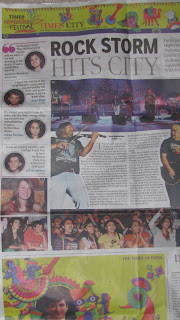After almost three months spent in Bangalore, landing in Patna (Bihar) is a bit like going to India for the first time again. I remember claiming that I had no problem to get used to Bangalore, that this city was not so different from our occidental ones. I will still pretend it, even now, but I learnt today that one city, or one state, is not representative of the country I am living in.
In less than an hour I have been exposed to so much activity, so much craziness, so much noise, so much movement ; so much poverty and misery too. It is painful to see that the whole standard of living of everybody out there, as far as I saw, is divided by three or four. Fancy stores, european cars, french restaurants, or even fashion don’t have their place here. Here, at least from the airport to the railway station, streets are literally full of people from the lower social classes. When walking, one have to avoid beggars, sellers of all kinds, lepers, sleepers, running kids, poor guys curved below a huge package, or even just people in a hurry. And it is even worse as a driver since streets belong to pedestrians much more than they belong to vehicles. All this means that it is much harder to find its way in such a mess. Trust me, Bangalore is a quiet and peaceful place, where you can walk without worrying about your wallet or where you set foot. As a white guy holding a hiking backpack and accompanied by an indian taking pictures of everything, it is simply impossible to vanish in the crowd, too bad for me.
The contrast between urban and natural areas is even stronger. There is much more identity out there, in the way that Bihar is way less occidentalized. There is still this kind of authenticity that is getting lost everywhere else. People are stuck in the penultimate century, and when it is not about misery it makes it beautiful. I have experienced travelling in a desperately old train, slow enough to allow you to enjoy the sight of hidden life moments, and this is priceless. Women coming back from the rice fields, carrying the fruits of their labor. Small autonomous communities, perched on a slight land elevation against the monsoon. People having lunch in their backyard, right next to the railway. Marshy lands, temples under trees, and many more. That’s the India I’ve been dreaming of.
In less than an hour I have been exposed to so much activity, so much craziness, so much noise, so much movement ; so much poverty and misery too. It is painful to see that the whole standard of living of everybody out there, as far as I saw, is divided by three or four. Fancy stores, european cars, french restaurants, or even fashion don’t have their place here. Here, at least from the airport to the railway station, streets are literally full of people from the lower social classes. When walking, one have to avoid beggars, sellers of all kinds, lepers, sleepers, running kids, poor guys curved below a huge package, or even just people in a hurry. And it is even worse as a driver since streets belong to pedestrians much more than they belong to vehicles. All this means that it is much harder to find its way in such a mess. Trust me, Bangalore is a quiet and peaceful place, where you can walk without worrying about your wallet or where you set foot. As a white guy holding a hiking backpack and accompanied by an indian taking pictures of everything, it is simply impossible to vanish in the crowd, too bad for me.
The contrast between urban and natural areas is even stronger. There is much more identity out there, in the way that Bihar is way less occidentalized. There is still this kind of authenticity that is getting lost everywhere else. People are stuck in the penultimate century, and when it is not about misery it makes it beautiful. I have experienced travelling in a desperately old train, slow enough to allow you to enjoy the sight of hidden life moments, and this is priceless. Women coming back from the rice fields, carrying the fruits of their labor. Small autonomous communities, perched on a slight land elevation against the monsoon. People having lunch in their backyard, right next to the railway. Marshy lands, temples under trees, and many more. That’s the India I’ve been dreaming of.
